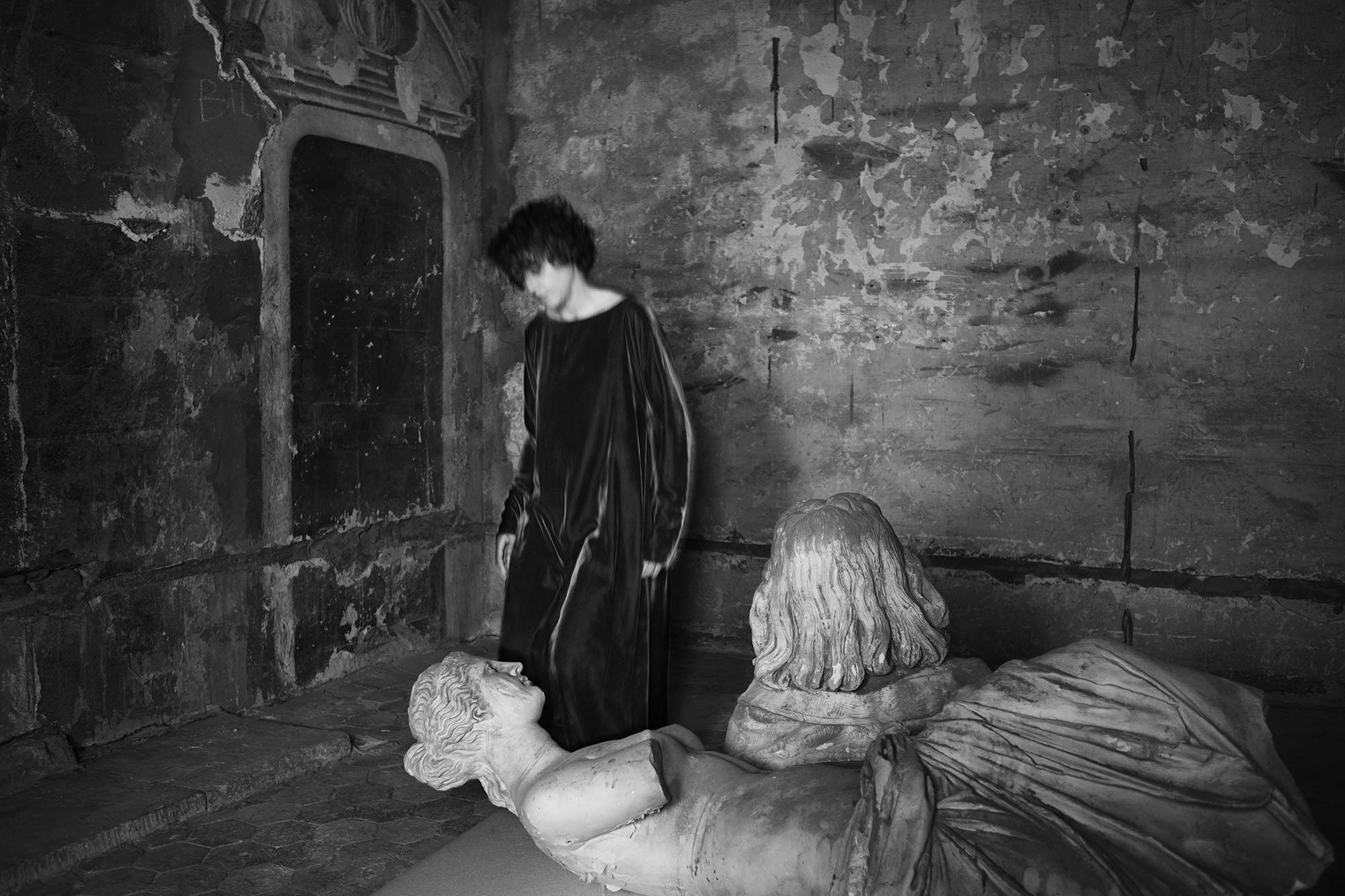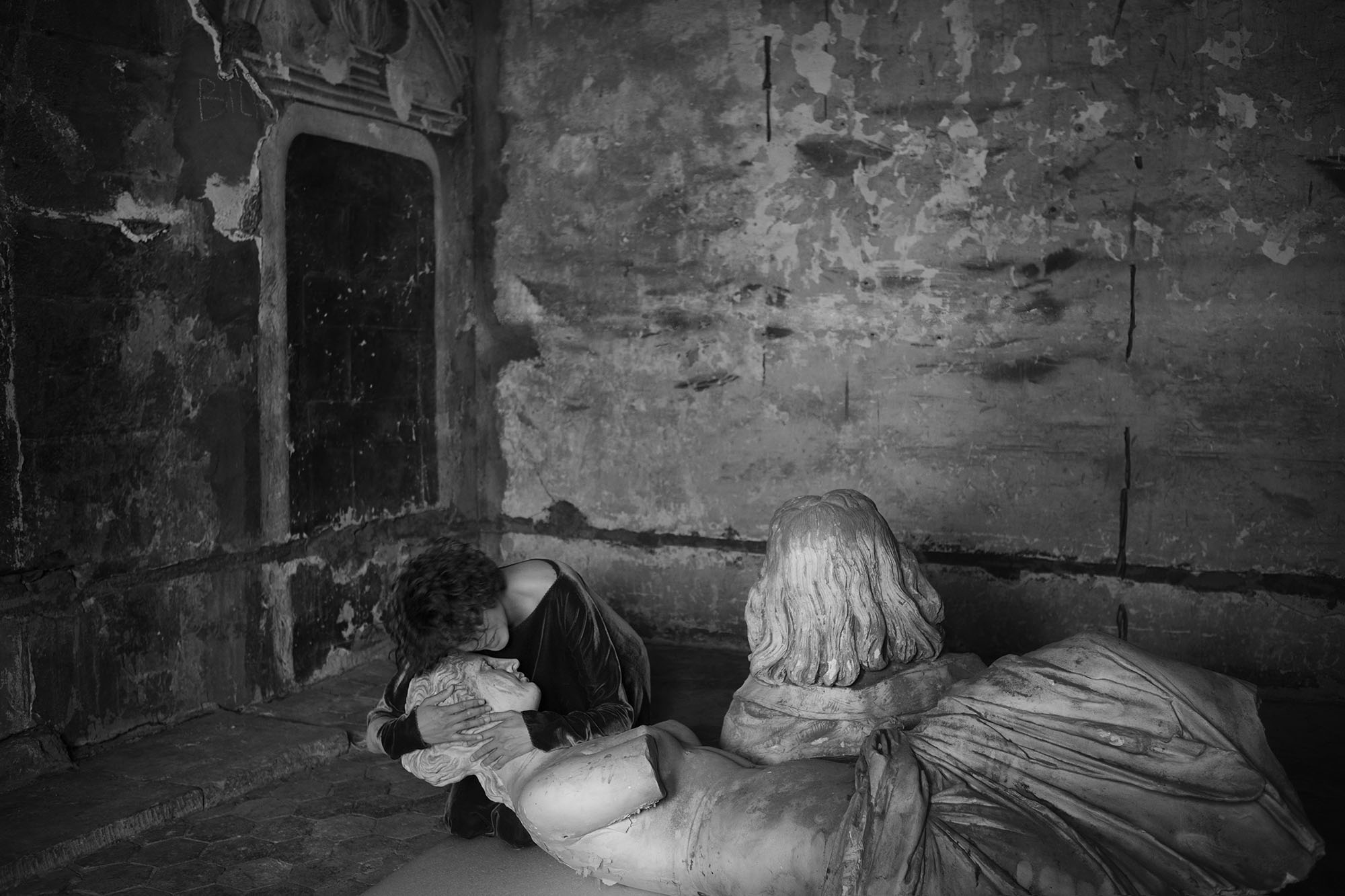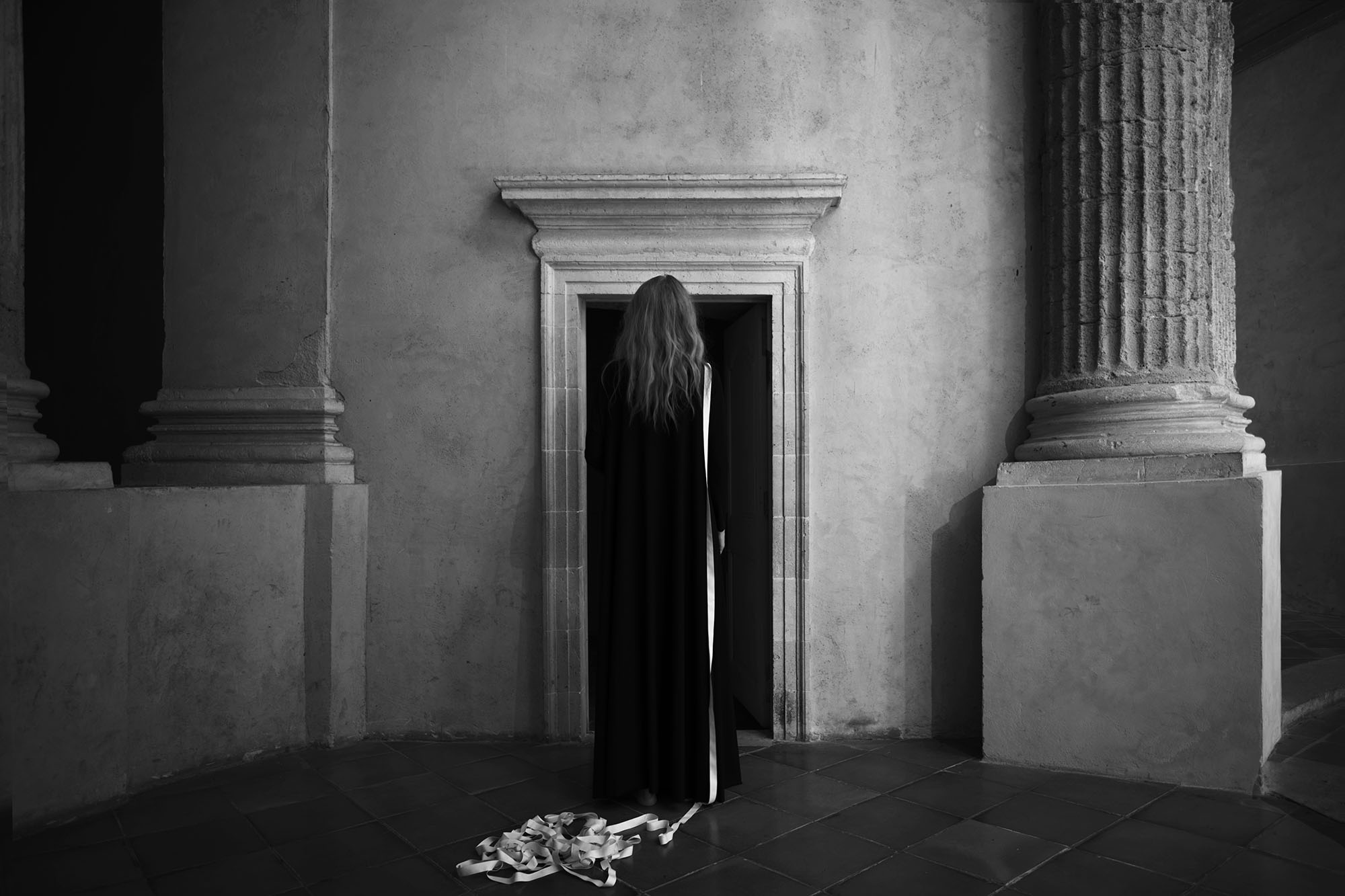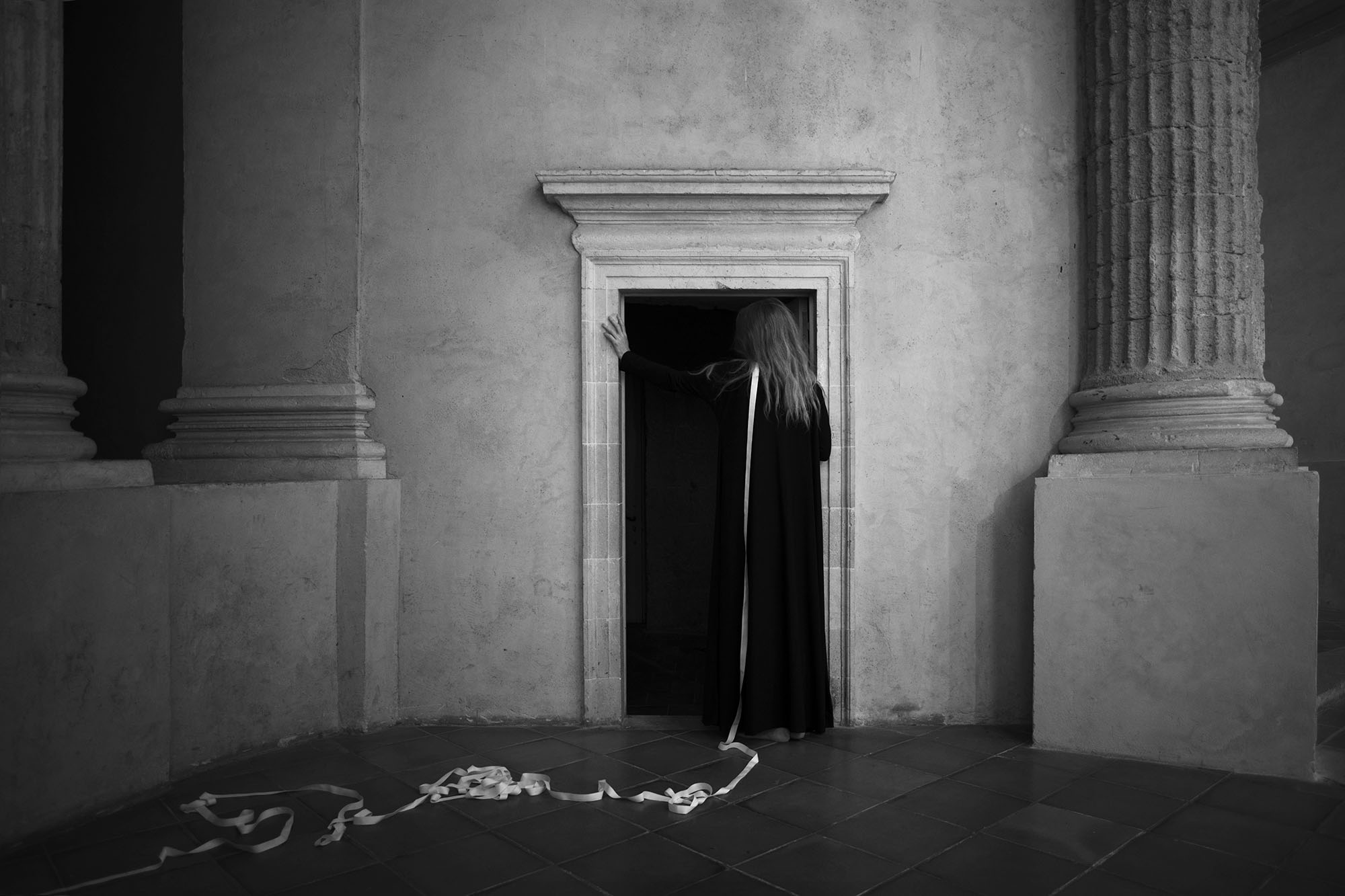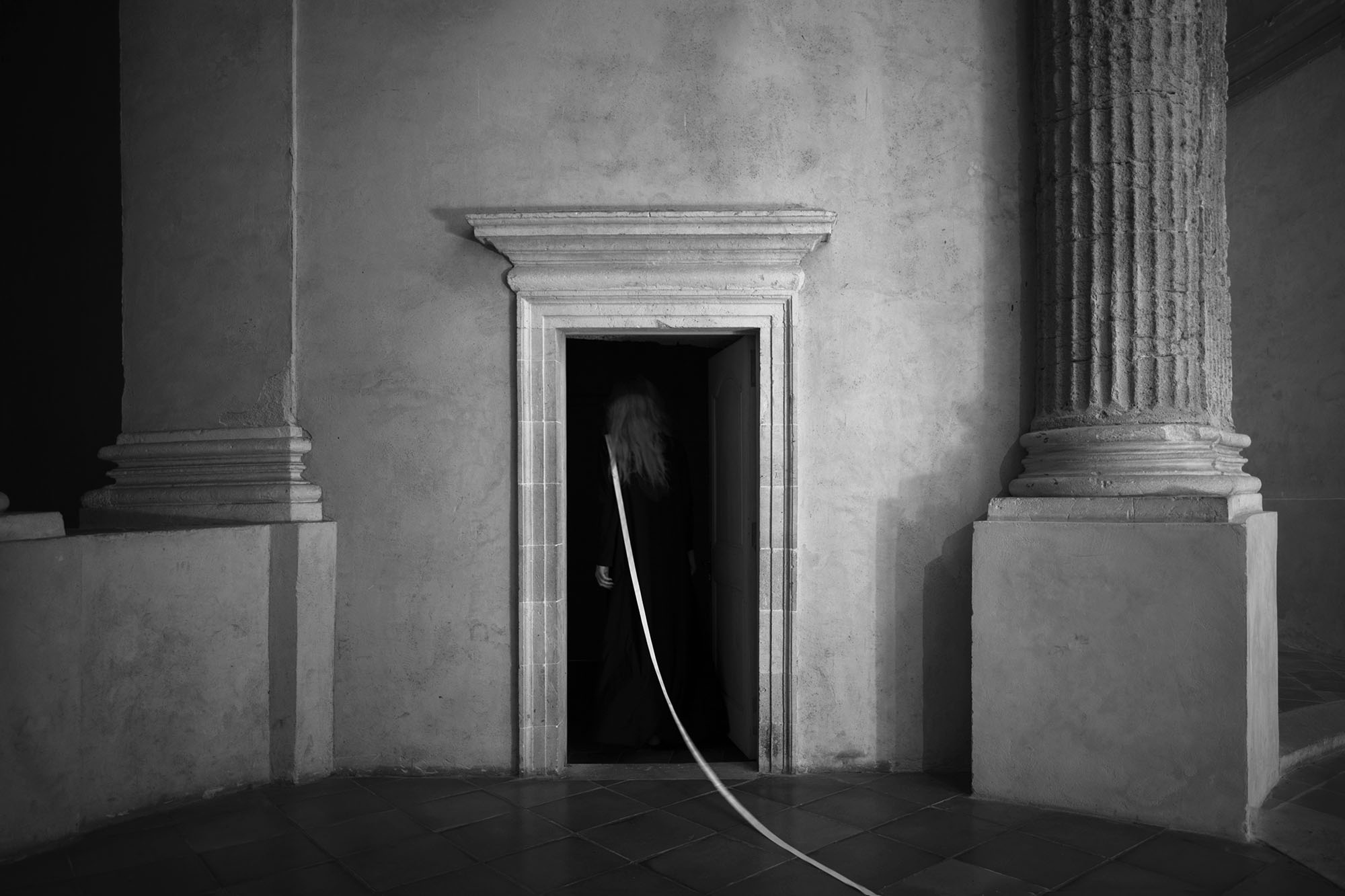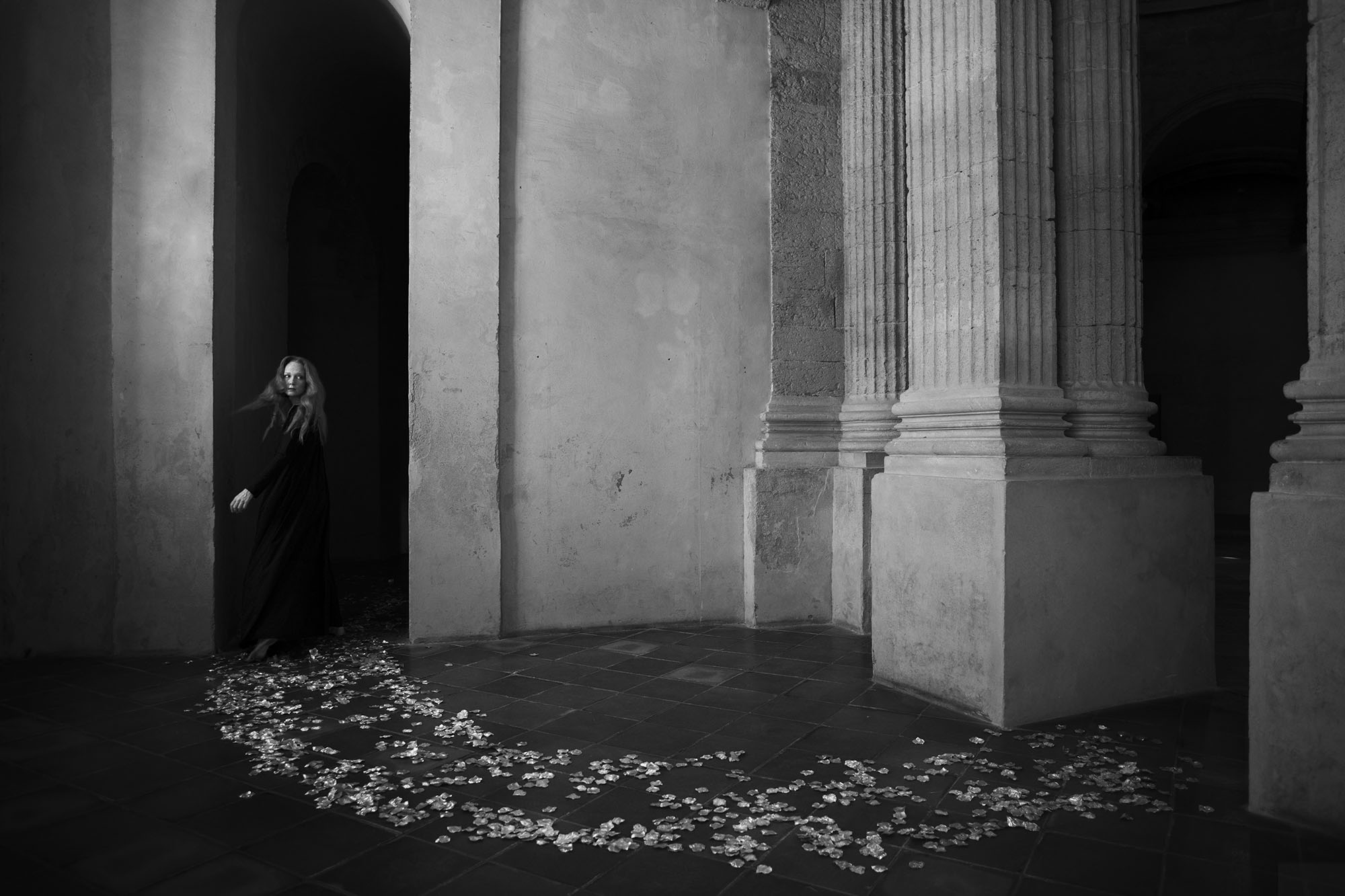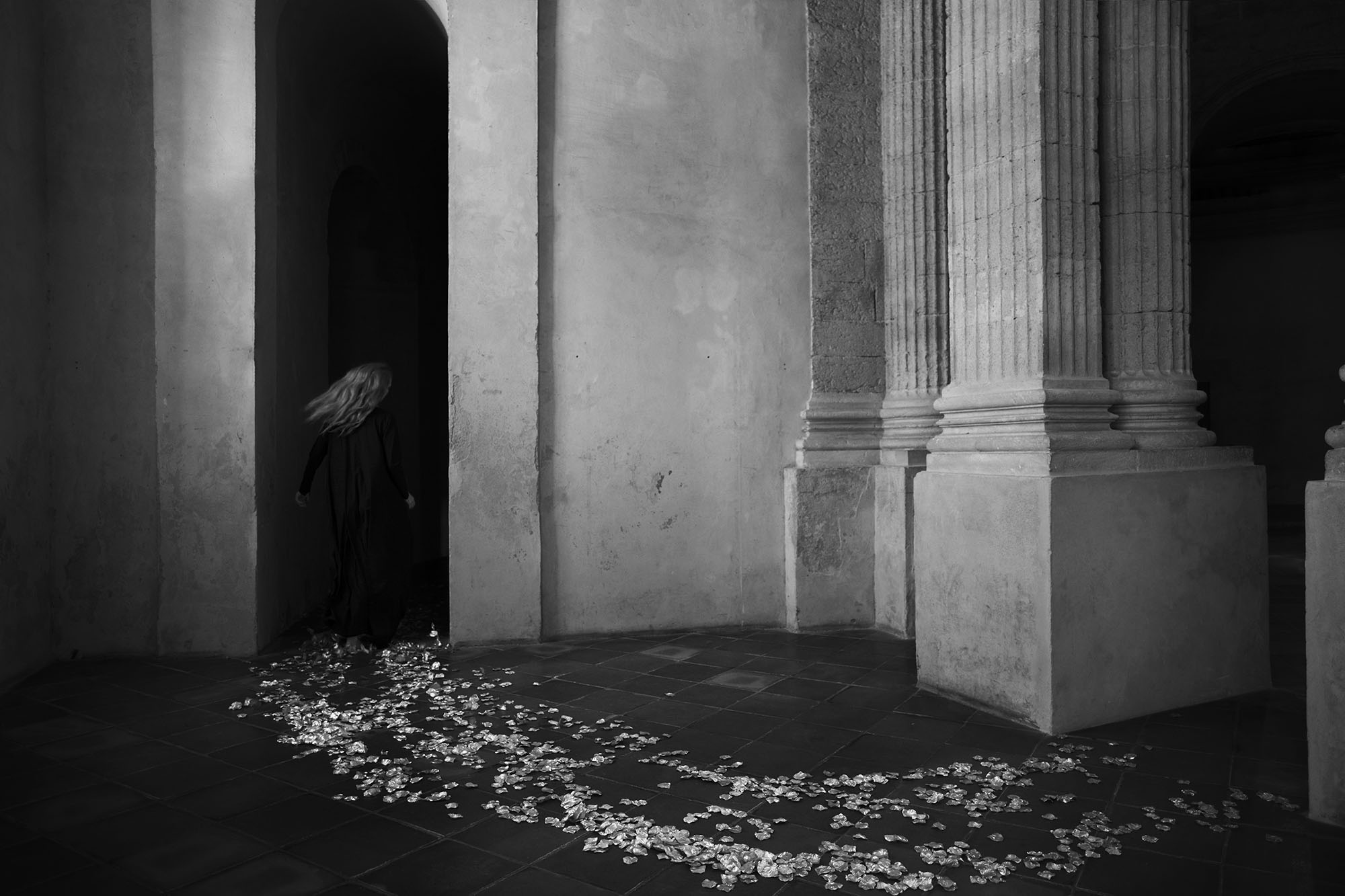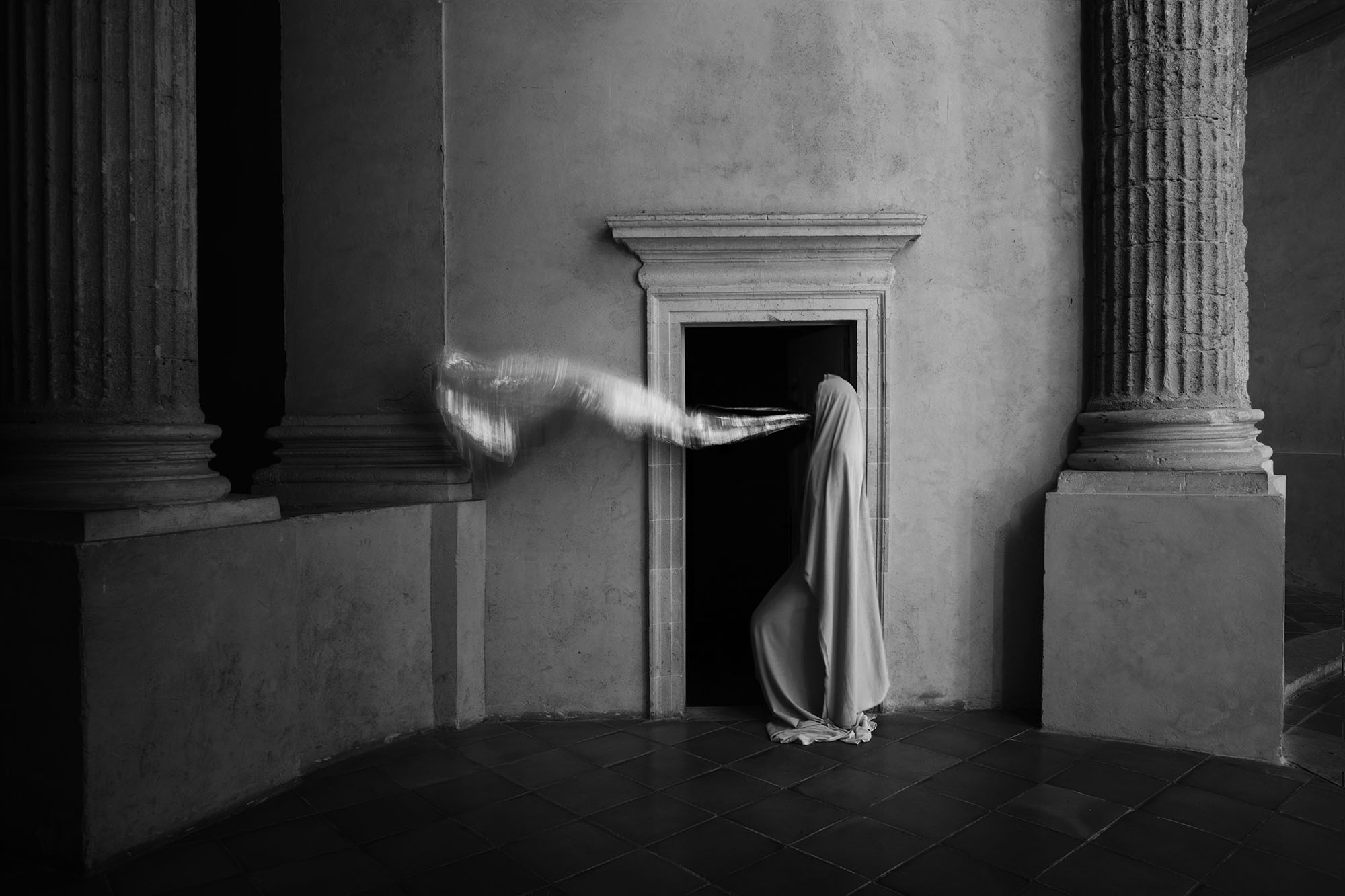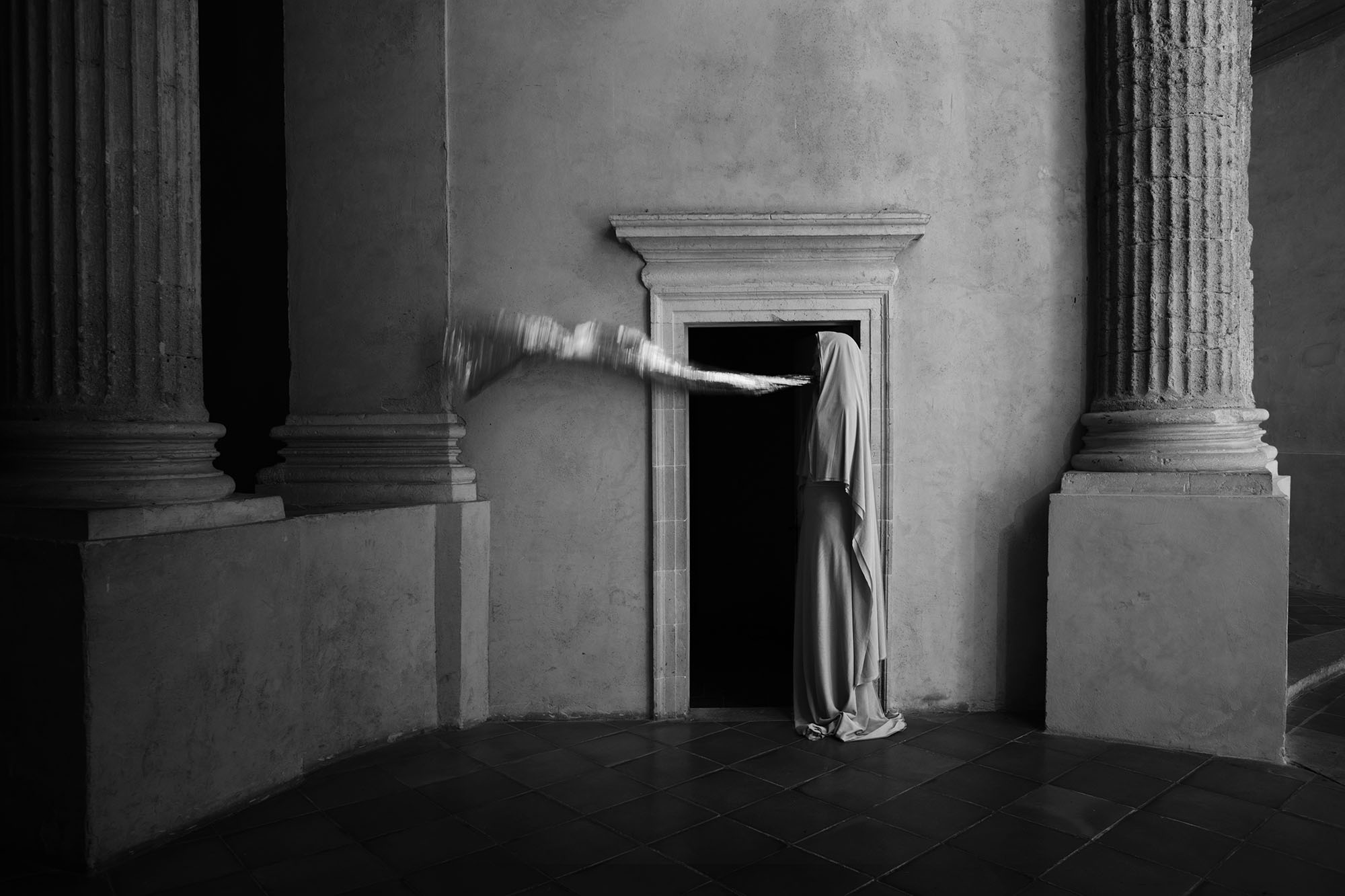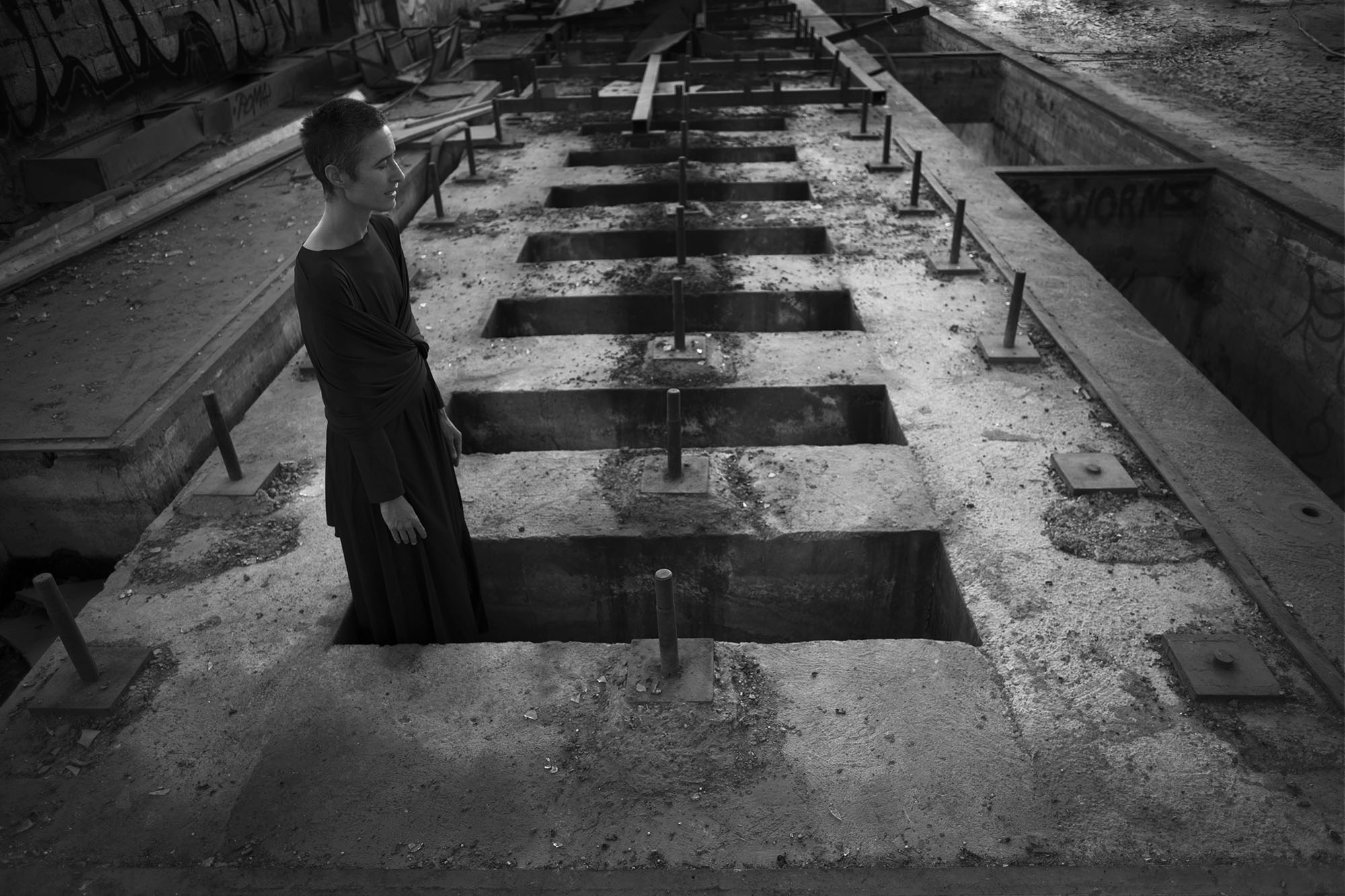In Living Memory, 2019
Prints from digital files on Hannemühle Rag Baryta 315 gr paper
Dimensions: 90x60 cm, 60x40 cm, 5 copies per format
Dimensions: 90x60 cm, 60x40 cm, 5 copies per format
Female figures inspired by mythology and classical Antiquity
Prix de Photographie de la Fondation des Treilles
Although I’m a female artist, and mindful of the often appalling depictions of women in tales and legends, for this series I’ve decided not to limit myself to their meanings in ancient Greece, nor to explore their enduring presence in modern life.
Rather, I drew on the ability of myths to evolve on an intimate level, as Jean Cocteau wrote of his adaptation of Antigone:
“(…) it is important to realize that accuracy is inaccurate; it is more natural to invent a Greece by expressing only an inner world than to try to recreate a dead Greece from a few remains that stir us.”
By creating these images, I too take part in the ongoing life of myths, by shaping a personal and contemporary interpretation of these strange and wonderful female incarnations: muse or princess, goddess, nymph or woman, placing them in a mental space of my own devising, rather than in landscapes or architecture connected to classical Antiquity.
This new work is related to my current series, “Second Space,” begun in 2018, through the choice of settings and formats (single figure, usually with an object, enclosed spaces, natural light, full-frontal shots, black and white).
Whether in motion or still, the actions are danced.
In relation to these formal choices, in “Second Space” I seek out the presence of an “undefined mythos,” something that inhabits the image without my agency, something I discover only after the fact, and accept.
Visions beyond language, which can only be embodied by photographic images.
This was the path that led me to approach the Fondation des Treilles with a project on Greek myths, a Mediterranean theme, perforce (perforce, yes, but with great enthusiasm).
Still, I needed a refresher course before plunging into this adventure, so first I plunged into books. I hoped to form a more precise and, if possible, critical point of view – though not at a specialist level, of course. It was time well spent.
Unconstrained by scientific rigor, I sought first of all to clarify my thinking about the figures who interested me. That clarity came when I put myself in their place.
The main reason that my characters are female.
But also to add a feminine voice, absent from the ancient song. For in every version of a mythical tale, it is invariably a male voice that starts and concludes the telling. Did the women of ancient Greece compose their own myths? If so, they have since sunk into oblivion.
I hesitate to say it, but fortunately Homer was a man, else the treasure left to us in his name would surely have joined the unheard works of women…
By putting myself in the place of my protagonists, it occurred to me that the settings for the images should be the equivalent of each character’s inner world. A glove turned inside out, displaying her thoughts and state of mind.
So it was that Medea came on the scene when I stepped inside the cellars of the Tour Royale in Toulon, a fearful prison. There, Medea – prisoner of her hatred and regrets – immediately took her place. As I continued my explorations, each figure found her proper setting in a variety of architectures: religious, domestic, aristocratic, military or industrial, in Languedoc and in Provence.
* "La Grèce au théâtre", Cahiers de l'Herne n°113 Jean Cocteau, page 340.
Translation: Sheila Mooney
Prix de Photographie de la Fondation des Treilles
Although I’m a female artist, and mindful of the often appalling depictions of women in tales and legends, for this series I’ve decided not to limit myself to their meanings in ancient Greece, nor to explore their enduring presence in modern life.
Rather, I drew on the ability of myths to evolve on an intimate level, as Jean Cocteau wrote of his adaptation of Antigone:
“(…) it is important to realize that accuracy is inaccurate; it is more natural to invent a Greece by expressing only an inner world than to try to recreate a dead Greece from a few remains that stir us.”
By creating these images, I too take part in the ongoing life of myths, by shaping a personal and contemporary interpretation of these strange and wonderful female incarnations: muse or princess, goddess, nymph or woman, placing them in a mental space of my own devising, rather than in landscapes or architecture connected to classical Antiquity.
This new work is related to my current series, “Second Space,” begun in 2018, through the choice of settings and formats (single figure, usually with an object, enclosed spaces, natural light, full-frontal shots, black and white).
Whether in motion or still, the actions are danced.
In relation to these formal choices, in “Second Space” I seek out the presence of an “undefined mythos,” something that inhabits the image without my agency, something I discover only after the fact, and accept.
Visions beyond language, which can only be embodied by photographic images.
This was the path that led me to approach the Fondation des Treilles with a project on Greek myths, a Mediterranean theme, perforce (perforce, yes, but with great enthusiasm).
Still, I needed a refresher course before plunging into this adventure, so first I plunged into books. I hoped to form a more precise and, if possible, critical point of view – though not at a specialist level, of course. It was time well spent.
Unconstrained by scientific rigor, I sought first of all to clarify my thinking about the figures who interested me. That clarity came when I put myself in their place.
The main reason that my characters are female.
But also to add a feminine voice, absent from the ancient song. For in every version of a mythical tale, it is invariably a male voice that starts and concludes the telling. Did the women of ancient Greece compose their own myths? If so, they have since sunk into oblivion.
I hesitate to say it, but fortunately Homer was a man, else the treasure left to us in his name would surely have joined the unheard works of women…
By putting myself in the place of my protagonists, it occurred to me that the settings for the images should be the equivalent of each character’s inner world. A glove turned inside out, displaying her thoughts and state of mind.
So it was that Medea came on the scene when I stepped inside the cellars of the Tour Royale in Toulon, a fearful prison. There, Medea – prisoner of her hatred and regrets – immediately took her place. As I continued my explorations, each figure found her proper setting in a variety of architectures: religious, domestic, aristocratic, military or industrial, in Languedoc and in Provence.
* "La Grèce au théâtre", Cahiers de l'Herne n°113 Jean Cocteau, page 340.
Translation: Sheila Mooney
-

Penelope fell asleep
-

Penelope's Dream
-

Penelope's crossing
-

Penelope sailing
-

Pandora, The Box
-

Pandora, The Discovery
-

Pandora, The Treasure
-
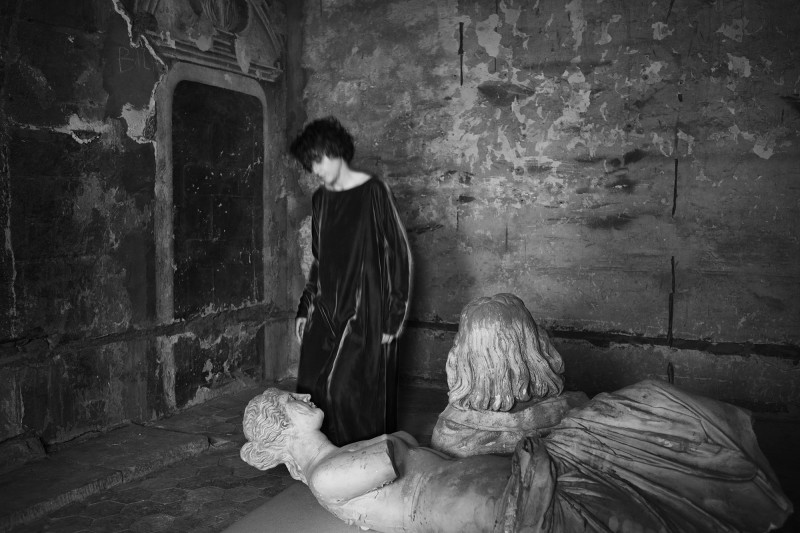
Harmony opens her eyes
-
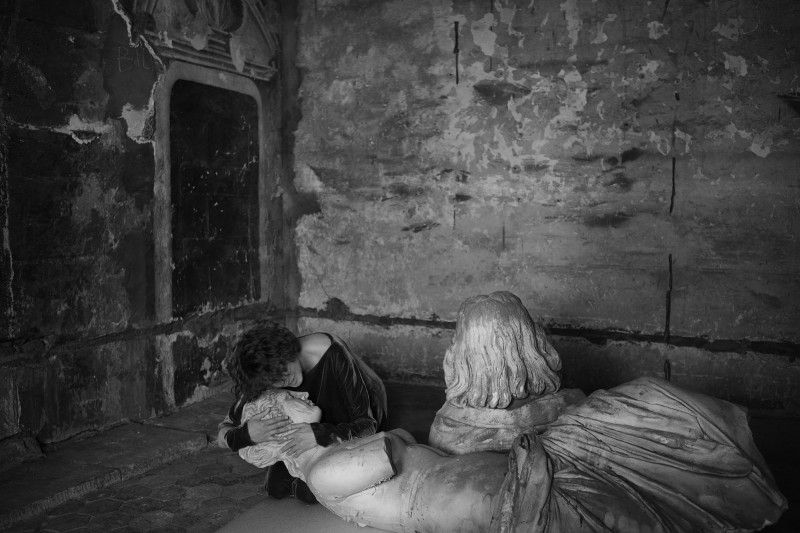
Consoling Harmony
-
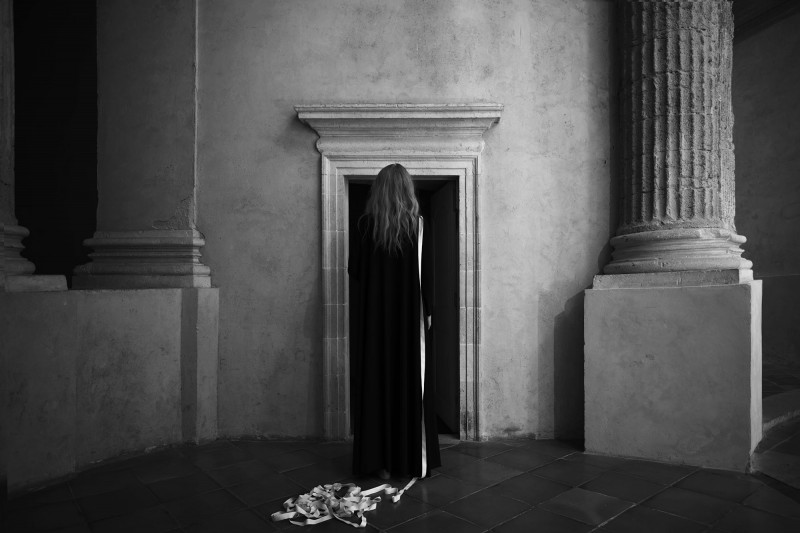
Ariadne's Thread 1
-
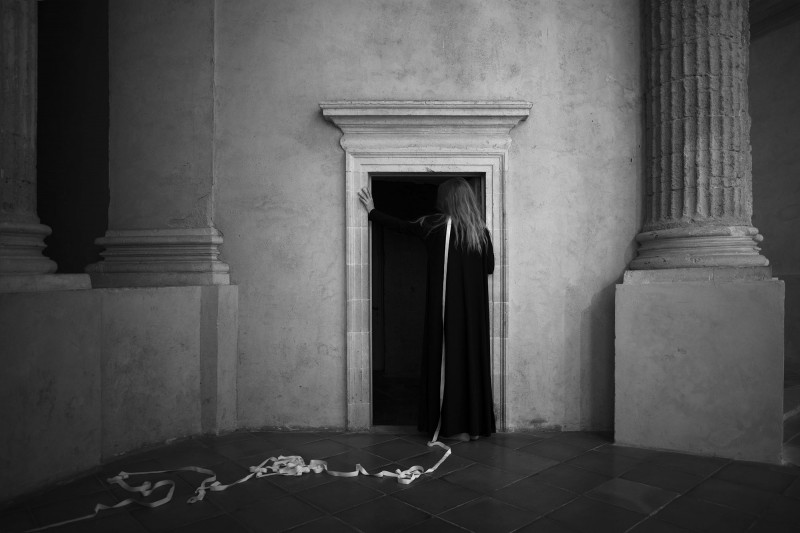
Ariadne's Thread 2
-
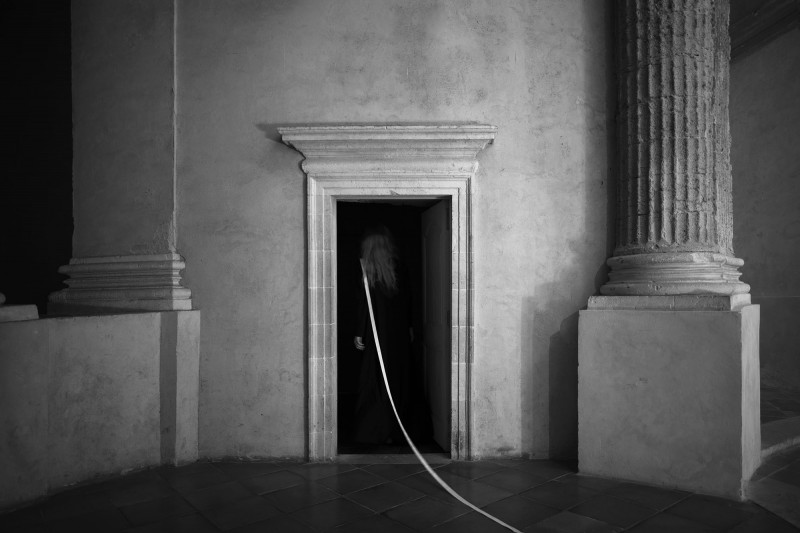
Ariadne's Thread 3
-
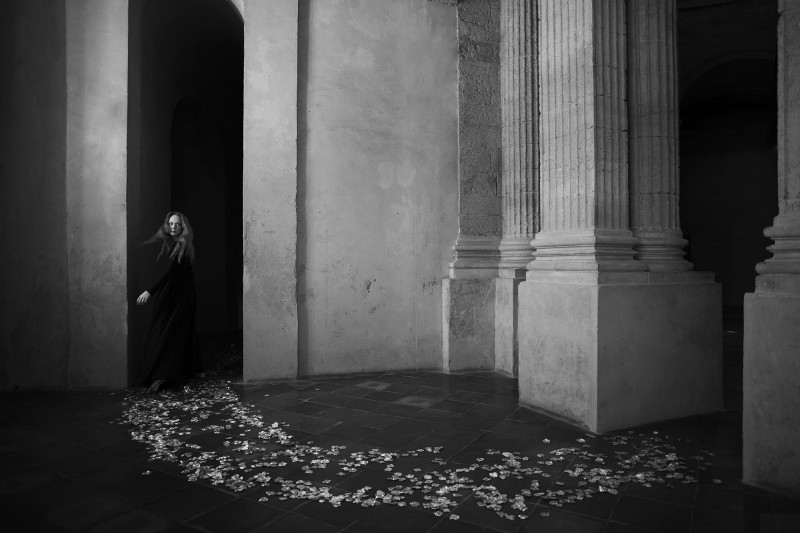
Ariadne, Mad Love 1
-
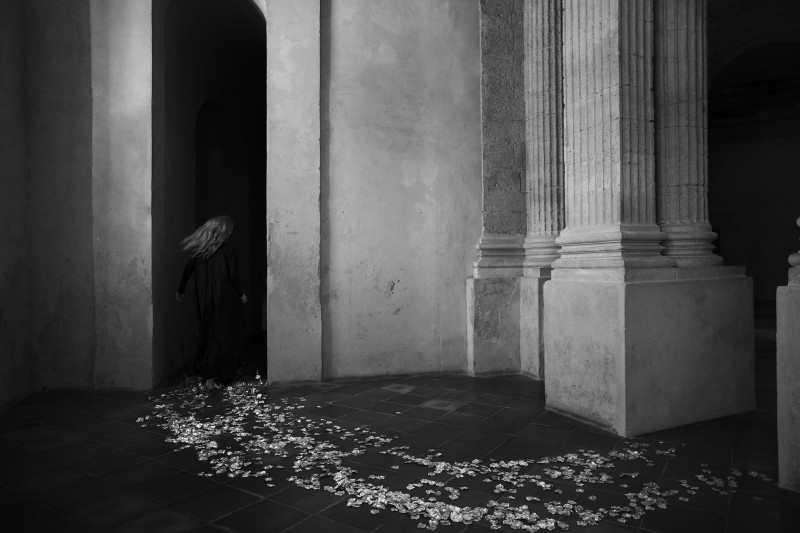
Ariadne, Mad Love 2
-
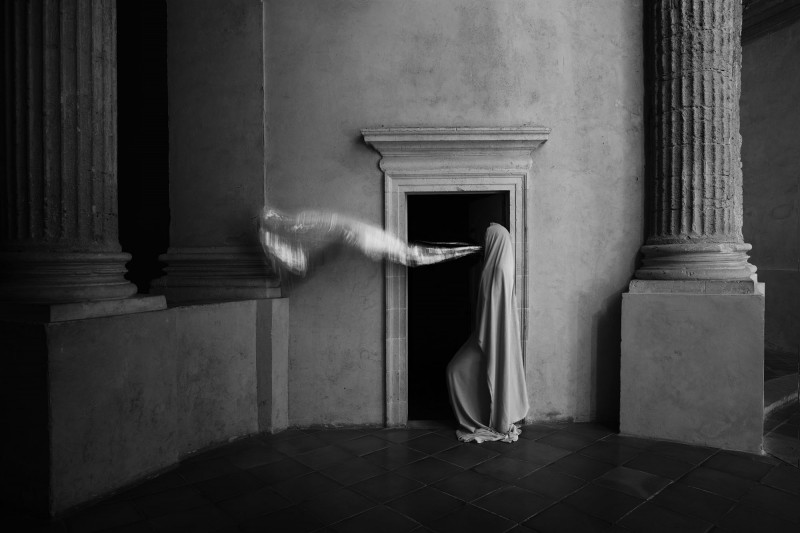
Pythia, golden words
-
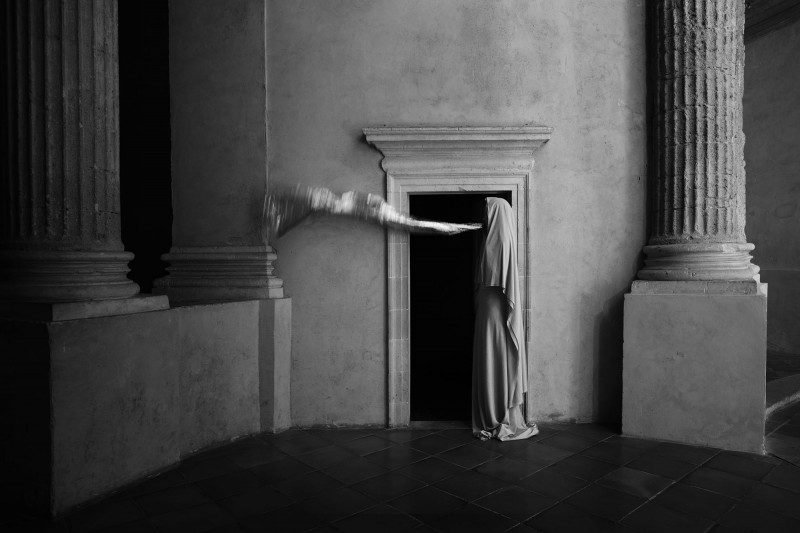
Standing Pythia
-

Eurydice lost Orpheus
-

Eurydice at the door of Hell
-
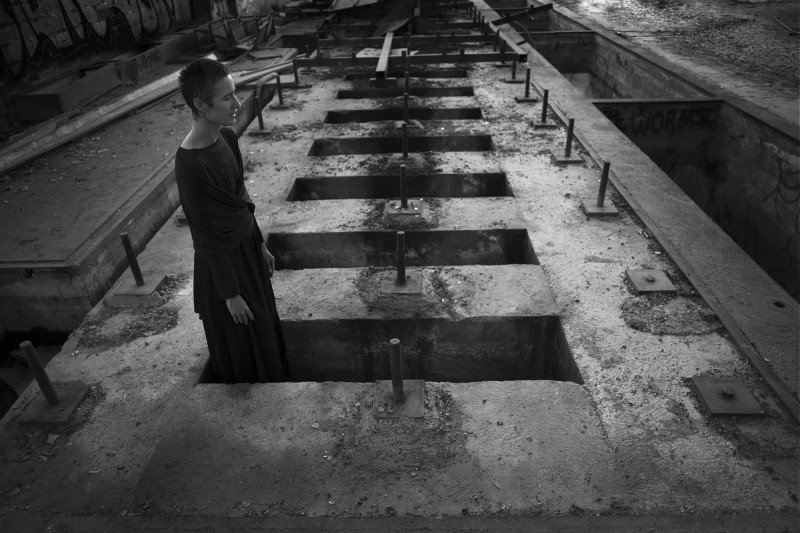
Eurydice back 1
-

Medea apparition
-

Medea unveiled
-

Magician Medea
-

Furious Medea
-

Medea prisoner







